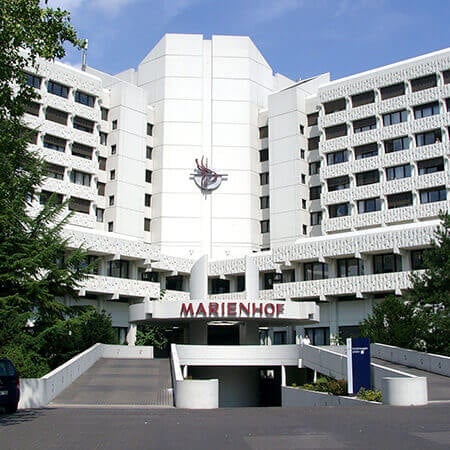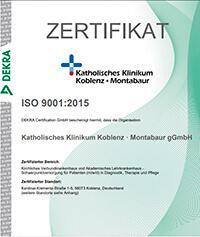Femoral neck fracture is one of the most common injuries in the elderly population. Due to the impaired bone tissue mineralization, it becomes fragile, and therefore it fractures even with a minimal impact. Every year, doctors in Germany diagnose 135,000 new cases of femoral neck fractures, while in the UK this indicator reaches 100,000. Pathology is one of the ten most common causes of disability in the adult population. You can undergo treatment for a fracture of the femoral neck abroad, in one of the countries with developed medicine. The best hospitals in the world perform safe operations with good functional outcomes.
Content
- Types of femoral neck fractures
- Treatment options
- Preservation of the femoral head
- Hip replacement surgery
- How is joint replacement surgery performed
- Why is it worth undergoing treatment abroad
- Treatment in Europe at an affordable price
Types of femoral neck fractures
Approximately 9 out of 10 hip fractures occur in the proximal (upper) hip. This group of injuries accounts for three types of the femoral fractures:
- True (intracapsular) femoral neck fracture – 50% of cases.
- Fracture in the region of the greater trochanter of the femoral bone (also called extracapsular femoral neck fractures) – 40% of cases.
- Femoral head fracture – 10% of cases.
Intracapsular femoral neck fractures, in turn, are also divided into three types, depending on where the femoral neck broke:
- Subcapital – a fracture of the femoral neck in the area of its transition to the head.
- Intermediary – a fracture in the center of the length of the femoral neck.
- Basal – a fracture in the area of the base of the femoral neck.
About 80% of cases of femoral neck fractures are displaced. This means that the normal position of the bones is disrupted, so they have to be aligned surgically. For patients with an initially non-displaced fracture of the femoral neck who have not undergone surgery, the probability of displacement of bone fragments reaches 30-50%.
Treatment options
Developed countries almost do not use conservative treatment. This is due to the fact that without surgery, the risk of death of a patient within 6 months is 80%. The survivors are often disabled – they can no longer walk.
Therefore, not only patients with displaced hips, but all people who have suffered from the femoral neck fracture are candidates for surgery. Doctors perform two types of surgical interventions:
- Internal fixation (osteosynthesis).
- Hip replacement (joint replacement surgery).
Joint replacement is a safer method with minimal mortality and complications. Therefore, this method of treatment is considered the main one.
Less commonly, open reduction and internal fixation are performed. Broken bones are straightened and fixed with metal devices. This method of treatment is used in patients without osteoporosis. When the bones are weakened, the technique is not always successful. The risk of aseptic necrosis (death) of the femur is one of the disadvantages of internal fixation. This complication develops in 15% of patients within 3 years of observation.
Regardless of what kind of surgery is performed, it should be carried out as early as possible. Ideally, patients are operated on in the first 2 days. A study by Shiga et al, involving more than 250,000 patients, showed that with a delay in the operation of more than 48 hours, the risk of death within 1 year from all causes increases by 32%, and mortality in the first month after surgery increases by 41%.
In Europe and developed countries of the world, patients are always operated on the day of admission to the hospital or the next day. Guidelines from different countries suggest different times for surgical interventions, but in any case, they do not exceed 48 hours. The clinical guidelines of some states prescribe to operate on patients with the femoral neck fracture even earlier. For example, in Scotland, the operation is performed in the first 36 hours, and in Australia and New Zealand the timeframe is within 24 hours.
Preservation of the femoral head
Open reduction with internal fixation presupposes preservation of the femoral head. This treatment is preferred in young, physically active patients who do not suffer from osteoporosis.
Nonetheless, such patients are few. The femur is very thick and difficult to break. The injury is usually sustained in a car accident or due to a fall from a great height.
Most of the patients are elderly people. 90% of femoral neck fractures occur over 70 years of age. Osteoporosis is detected in 80% of patients.
Therefore, developed countries tend to use open reduction with internal fixation less and less. After such an operation, the need for repeated surgical interventions occurs 4 times more often compared with joint replacement surgery. The risk of unsuccessful fixation reaches 40%. Many patients develop aseptic necrosis of the femur or bone fragments simply do not heal. Even after successful treatment, the functional indicators in patients are worse than after joint replacement surgery.
Hip replacement surgery
Endoprosthetics (hip replacement) is the main method of treating femoral neck fractures in countries with top-class medicine. There are two possible replacement options:
- Hemiarthroplasty – replacement of only the femoral part of the joint.
- Total arthroplasty – replacement of not only the femoral, but also the pelvic part of the joint (acetabular prosthetics).
Although total joint replacement provides the best results for most patients, this surgery costs 2 to 4 times more. Therefore, some patients undergo hemiarthroplasty. Its advantages, in addition to financial ones, are as follows:
- Surgery is less traumatic.
- Less blood loss.
- Better postoperative tolerance.
- Faster rehabilitation.
- Risk of dislocation of the endoprosthesis is lower (but for total arthroplasty it is also very low – it is calculated in fractions of a percent).
However, not all patients succeed in replacing only the femoral component of the joint. For this purpose, the entire acetabulum of the pelvic bone must be preserved. In addition, the operation has a big drawback: its functional outcomes are worse. Therefore, this type of surgical treatment is suitable mainly for patients over 70 years of age who have low physical activity and low requirements for the functional outcome of the surgical intervention.
According to the Swedish registry, 4.6% of patients develop chronic pain associated with acetabular erosion after replacing only the femoral component of the joint. They have to undergo another operation in order to additionally implant the pelvic component of the artificial joint. In other words, doctors actually perform total arthroplasty, but in two stages. Its functional outcomes are worse compared to conventional total arthroplasty performed within a single operation.
In countries with top-class medicine, the population is more active and life expectancy is higher. Therefore, doctors often prefer total replacement surgery. The joint is completely replaced with an artificial femoral and pelvic component. This type of intervention is suitable for:
- Patients under 60 years of age.
- Patients with high physical activity.
- Patients with high requirements for functional outcomes.
- Patients with concomitant coxarthrosis, even at the early stage.
Disadvantages: the cost of treatment for the femoral neck fracture is higher, the operation lasts 20 minutes longer, it is more traumatic, blood loss increases by an average of 140 ml. In the early postoperative period, the need for narcotic analgesics is higher.
How is joint replacement surgery performed
When performing the surgical intervention, the doctor removes the patient's own joint and replaces it with an endoprosthesis. It has two components:
- Femoral – imitates the femoral head.
- Pelvic – replaces the acetabulum.
The femoral component consists of the stem, neck, and head. The stem becomes an extension of the patient's own femur. The head provides joint mobility: it rotates inside the patient's own (in case of hemiarthroplasty) or artificial acetabulum (in case of total arthroplasty).
If total joint replacement surgery is performed, then in addition to the femoral component, the pelvic component is implanted. This is the cup inside which the head of the artificial femur rotates. A liner is placed between them to soften friction.
If during the operation only the femoral component of the artificial joint is implanted, then the surgical intervention lasts from 60 to 80 minutes. Total joint replacement lasts from 80 to 100 minutes.
The components of the artificial joint are pressed into the bone or glued with cement. In most cases, for joint replacement for other diseases, for example, for coxarthrosis, cementless fixation is used. With the neck fractures, it can also be used. However, in this case, doctors often prefer the cement method, since it has a number of advantages:
- Patients are activated earlier, which reduces the risk of complications.
- Less pain in the postoperative period.
- Lower risk of pain persistence in the long-term period after surgery (up to 1 year).
- Lower risk of periprosthetic femoral fractures.
- Faster restoration of the limb function.
- Better functional outcomes in the first 3 months (but 1 year after the operation there is no difference in the functional results of the cement and cementless method of fixing the components of the endoprosthesis).
In case of the femoral neck fracture, joint replacement is performed as an emergency intervention. Therefore, complications are more common than with arthroplasty for coxarthrosis, and functional outcomes may be worse, the need for repeated operations is higher. The average mortality rate of patients within 30 days is 1.8%. For comparison, after arthroplasty for arthrosis, this figure does not exceed 0.3%.
After the surgical intervention, rehabilitation is required. It takes place for several months. The rehabilitation phase is very important, as it allows patients to return to a normal, physically active life. The goals of rehabilitation can be different, as they depend on the person's age, state of health, and the level of activity before surgery. As a result of treatment and recovery, the patient should at least have no difficulty in carrying out normal daily activities.
With high-quality rehabilitation, a person can walk, engage in physical labor and drive a car. Doctors abroad use fast-track rehabilitation protocols for patients. They shorten the length of hospital stay, reduce the risk of complications, and improve functional outcomes. The maximum load on the operated leg is possible after 2 months with a cementless method of fixation, and after 1 month with cement fixation of the endoprosthesis.
Why is it worth undergoing treatment abroad
To undergo treatment of femoral neck fracture, you can go abroad, to one of the countries with developed medicine. You will have an open reduction with internal fixation or joint replacement. Our medical tourism company will take care of the organization of your trip abroad.
There are several reasons for you to undergo treatment of femoral neck fracture abroad:
- State-of-the-art equipment in the departments of orthopedics.
- High-precision diagnostics to clarify the features of the fracture, the presence of concomitant pathologies (osteoporosis, coxarthrosis), in order to choose the best treatment option.
- Successful emergency operations with good functional outcomes and low risk of complications.
- Vast experience in joint replacement: hospitals in developed countries perform tens of thousands of hip replacement surgeries every year.
- Use of the latest types of endoprostheses that will last for decades. The risk of repeated surgery within 10 years after total arthroplasty is only 2.5%.
- Use of cups with double mobility, thanks to which the risk of dislocation of the endoprosthesis for patients with total hip replacement approaches zero.
- The risk of periprosthetic joint infection is only 2%, while in some hospitals this figure reaches 17% for patients with femoral neck fractures.
- Adequate postoperative pain relief, which not only improves the tolerance of the postoperative period, but also further reduces the risk of complications.
- Full-fledged rehabilitation, which allows getting the best functional outcomes in the long-term period after surgery and reducing the risk of complications.
In the event of the femoral neck fracture, internal fixation or joint replacement should be performed as soon as possible. The best results can be achieved with the surgery performed in the first 2 days after injury. Our specialists will select for you the most suitable hospital abroad, where you can undergo treatment as soon as possible.
Treatment in Europe at an affordable price
To undergo treatment of femoral neck fracture in one of the European hospitals, please use the services of the medical tourism company Booking Health. On our website, you can find out the cost of treatment in different hospitals and compare prices in order to book a medical care programat a favorable price. The treatment of femoral bone in a European hospital will be easier and faster for you, and the cost of treatment will be lower.
You are welcome to leave your request on the Booking Health website. Our specialist will contact you and provide a free consultation on treatment in Europe. The medical tourism company Booking Health will take care of the organization of your trip abroad. We will provide the following benefits for you:
- We will select a hospital for treatment in Europe, whose doctors specialize in treating femoral neck fractures and achieve the best results.
- We will solve the problem of the language barrier, we will help to establish communication with your doctor.
- We will reduce the waiting time for the medical care program. You will undergo treatment at the most suitable dates for you.
- We will reduce the price. The cost of treatment in European hospitals will be reduced due to the absence of extracharges and additional coefficients for foreign patients.
- We will help you solve any organizational issues: we will draw up documents, meet you abroad and take you to the medical center, book a hotel, provide interpreting services.
- We will prepare a medical care program and translate medical documents. You will not need to repeat the previously performed diagnostic procedures.
- We will help you keep in touch with the hospital after treatment in Europe.
- We can arrange additional diagnostic examinations and treatment in a European hospital, if required.
- We will buy medicines in another country and forward them to your native country.
The world's leading doctors will take care of your health. The Booking Health specialists will help reduce the cost of treatment, organize your trip, and you can fully focus on restoring your health.
Authors:
This article was edited by medical experts, board-certified doctors Dr. Nadezhda Ivanisova, and Dr. Bohdan Mykhalniuk. For the treatment of the conditions referred to in the article, you must consult a doctor; the information in the article is not intended for self-medication!
Our editorial policy, which details our commitment to accuracy and transparency, is available here. Click this link to review our policies.














